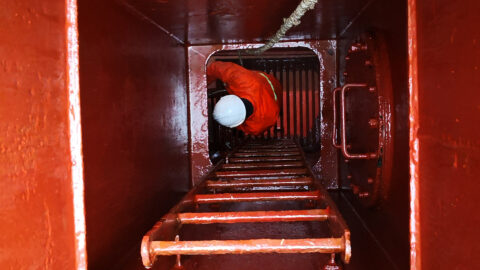The number of naval assets tackling piracy in the Gulf of Aden and the Indian Ocean is set to drop sharply by the beginning of 2012, as austerity policies in many countries inevitably lead to big reductions in military budgets.
In addition, continuing tensions in the Middle East have seen some warships pulled away from counterpiracy work close to Somalia and reassigned to the Mediterranean to undertake duties related to the Libya conflict, private security and insurance sources have told Lloyd’s List.
Representatives of both European Union deployment EU Navfor and Nato admitted that the existing assets were under strain, but were quick to reject the suggestion that drastic cuts were in the offing.
However, Watkins Syndicate underwriter Emma Russell pointed to an EU Navfor presentation to Lloyd’s in May stating that there would be a planned decrease in overall naval security presence this winter, and said that this had been substantiated by further meetings with the commanders of naval forces operating in the region.
In addition, Peter Cook, founder of the Security Association for the Maritime Industry trade association, said that he had also been told at a conference in July that the number of ships in the high-risk area was to be reduced.
“Forces’ average availability has been reduced. Every single western country has had a defence review and not one country has come out with more money for the navy, everyone is having their budget reduced. No one has said they will be building more ships to combat the problem of piracy,” he said.
David Peach, director of British security contractor Solace Global Maritime, said: “A number of clients have expressed concerns regarding the commitment of EU Navfor in countering the threat of Somali piracy.
“In particular, one global shipping line that we represent is beginning to question the need to register with UK Maritime Trade Operations office in Dubai when transiting the high-risk area, as they perceive that the process has negligible effect in protecting its vessels.”
An EU Navfor spokesman said that EU Navfor currently has six warships in operation which it considers to be an optimum number, but admitted that any fewer would not be enough.
He added: “The number of warships fluctuates due to the availability from member states. On average we are one ship down on last year. We have more than the minimum requirement though.”
A spokesman for Nato said there were 18 vessels from Combined Maritime Forces, Nato and EU Navfor on duty on October 10, 2010, and 18 units on October 10, 2011.
“In addition, the general number of independently deployed nations conducting counterpiracy has risen since last year,” he added.
Giles Noakes, head of security of international shipowner group BIMCO, said that the confusion lay in the fact that it was not just EU Navfor but the naval deployment at large that was experiencing the shortfall.
“It is very difficult to identify who is saying what. At a recent briefing, speaking on behalf of the naval forces, it was confirmed that there was a growing trend in shortfalls of naval assets that needed filling urgently.”
Naval forces needed 25 more ships between them at any one time to do the job and the situation was likely to get worse this winter, Mr Noakes said.
Ms Russell said that if there were around 20 warships in the 2.8m sq m high-risk area, then that was the equivalent of 20 police cars protecting Europe at 15 mph.
Mr Cook added that in order to guarantee helicopter assistance to vessels within an hour of a pirate attack there would need to be 83 helicopter-capable warships in the high-risk area.
Paul Gibbins of Protection Vessels International, another British security provider, said: “EU Navfor openly admit to woeful resources, so a slight reduction or increase is unlikely to be the catalyst for a significant change to the challenge of fighting piracy.”
• AT LEAST 12 Chinese seafarers have been murdered after their vessels were attacked on the Mekong River in northern Thailand, the Chinese foreign ministry has confirmed.
The killings appear to be drug related, as Thai police subsequently discovered massive quantities of amphetamines on board the ships.
The incident took place on October 5, although reports only began to emerge in English language media in the region yesterday. The ships involved have been named as Hua Ping and Yu Xing 8 .

